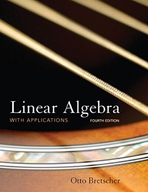In his groundbreaking text Ars Magna (Nuremberg, 1545), the Italian mathematician
Chapter 7, Problem 50(choose chapter or problem)
In his groundbreaking text Ars Magna (Nuremberg, 1545), the Italian mathematician Gerolamo Cardano explains how to solve cubic equations. In Chapter XI, he considers the following example:X3 + 6x = 20.a. Explain why this equation has exactly one (real) solution. Here, this solution is easy to find by inspection. The point of the exercise is to show a systematic way to find it. b. Cardano explains his method as follows (we are using modem notation for the variables): 1 take two cubes v3 and u3 whose difference shall be 20, so that the product vu shall be 2, that is, a third of the coefficient of the unknown x. Then, I say that v u is the value of the unknown jc . Show that if v and u are chosen as stated by Cardano, then x = v u is indeed the solution of the equation jc 3 + 6x = 20. c. Solve the system1 - u3 = 20 vu = 2to find u and i>. d. Consider the equationx3 + px = qywhere p is positive. Using your work in parts (a), (b), and (c) as a guide, show that the unique solution of this equation is( D M ! ) '-V-W(!)+( ?) This solution can also be written as(!)2+(!)3What can go wrong when p is negative? e. Consider an arbitrary cubic equationjc 3 + ax2 + bx + c = 0.Show that the substitution x = t (a/3) allows you to write this equation ast3 + pt= q.
Unfortunately, we don't have that question answered yet. But you can get it answered in just 5 hours by Logging in or Becoming a subscriber.
Becoming a subscriber
Or look for another answer
